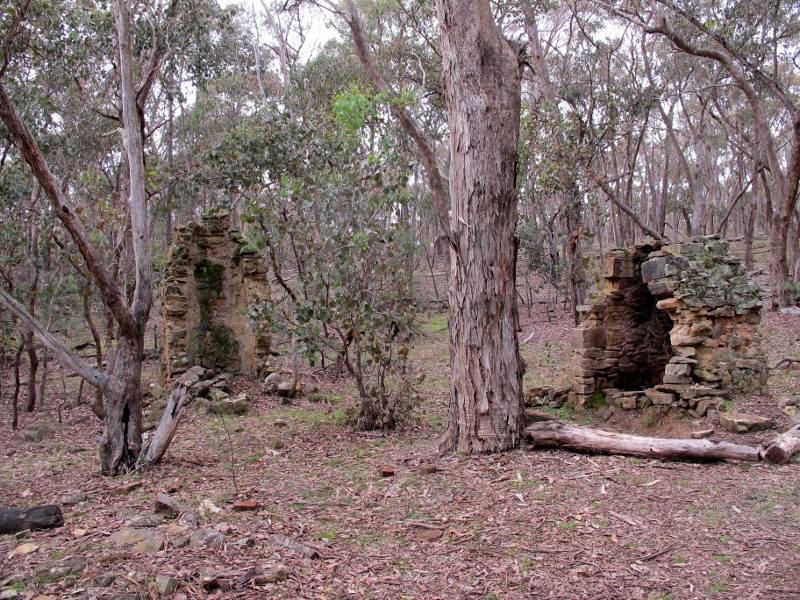Parks Victoria has released the results of its survey of users of the Castlemaine Diggings NHP.
There were 265 responses to the online survey. While such a voluntary survey has inbuilt problems of reliability, the results are probably a good indicator of public attitudes to the park.
The following details are worth reporting:

Hunts huts, Browns Gully, CDNHP: the recovering vegetation tells a story as eloquent as that of the ruins. It’s important that those presenting the Park to visitors acknowledge this fact.
‘Comparing the reasons for visiting to the frequency of visiting revealed that those who visit for ‘walking or hiking’ are the most frequent visitors, followed by those who ‘enjoy nature, birdwatching’, and ‘cycling, mountain biking’…
‘A key purpose of the online survey was to understand the importance of CDNHP to visitors. Looking at five implied values – aesthetic, historic, scientific, social, spiritual – ‘Historic’ values were the most commonly mentioned, followed by scientific/natural values and aesthetic values. ‘A place for prospecting’ was also an important value or activity associated with the park…
‘High priority overall was given to: tackling vandalism; reducing weeds; and addressing fire risk. The next highest priority actions were: information to help me find specific sites; better standard of access tracks; and restoration of specific structures. Other suggested management activities were: improved signage; interactive and digital interpretation; reducing weeds; and preventing disturbance from prospecting’…
In the ‘site walkovers’ organised by Parks, it’s worth noting that ‘Discussions referenced the ‘multi-layered’ landscape and a timeline of pre-gold rush Jaara landscape followed by the gold rush period and the post-gold era recovery. There were also references to tranquillity in the forest, bird-life, native flora and the importance of low-key ‘atmospheric’ sites requiring sensitive management.’
Parks has produced a set of direction themes as a result of the process:
- ‘Heritage: conserve the significant heritage features of the park.
- ‘Aboriginal connections: recognise and celebrate indigenous connections to the park and the wider landscape.
- ‘Experiencing: allow visitors to experience the full story of the heritage landscape through a range of sites that introduce the main interpretive themes and stories.
- ‘Recovering forest: highlight the importance of the recovering forest and contributions that can be made to help improve the habitat and future regeneration of the Box-Ironbark forest.
- ‘Community: seek ways of involving the local community in shaping the future management and interpretation of the CDNHP.’
As always, the devil is in the detail: will interpretation give appropriate weight to each of the five sections above? Parks has produced a table of proposed actions under the five themes. At first sight these are heavily weighted to interpretation of gold heritage–ie, ruins. The proposals are open for comment, and FOBIF will be doing that in the near future.




 Click on image for info/order page
Click on image for info/order page Click on image for info/order page
Click on image for info/order page Click on image for info/order page
Click on image for info/order page




















